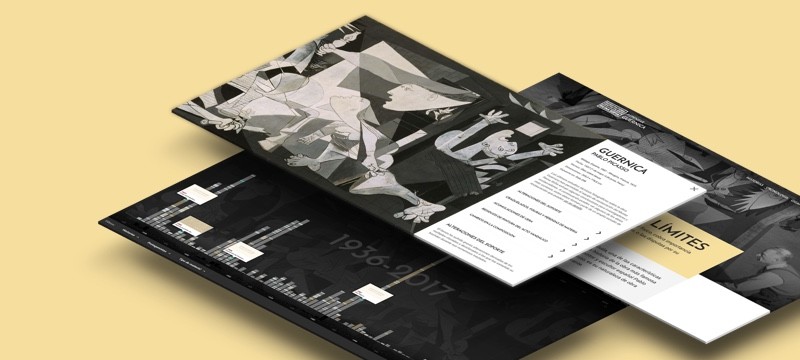Picasso: 75th Anniversary, Museum of Modern Art, New York, 1957
Pablo Picasso's 75th birthday in October 1957, coinciding with the 20th anniversary of Guernica’s creation, was behind the exhibition Picasso: 75th Anniversary. Organised by Alfred H. Barr Jr., the then director of the Museum of Modern Art (MoMA), New York, the show was a collaboration with the Art Institute of Chicago, scheduled to welcome the show in the autumn of 1957, and the Philadelphia Museum of Art, which was to host it from January 1958. Comprising over three hundred works, the exhibition was a decisive event for Guernica on different levels and, despite taking different approaches, it constituted the final landmark in a trail of retrospectives on the artist which stretched back to Milan in 1953.
Alfred H. Barr Jr.’s initial idea for the exhibition was to present Pablo Picasso’s work by setting out from Guernica (1937), putting forward the continuation of his exhibition project Picasso: Forty Years of His Art (1939) by contemplating a new generation of artists and viewers. However, recognising the existence of such a generation led him to organise an exhibition that would survey close to sixty years across the artist’s career. In doing so, Picasso’s oeuvre was shown not only in its masterly form, but also in its uniqueness, demonstrated by its variety of styles, and the techniques and languages used, now reflected in the midst of the consolidation of abstract expressionist art. The artist’s loans played a decisive role anew, particularly the forty-six sculptures that enabled, for the first time and comprehensively, profound insight into this particular side of his work. In conjunction with the exhibition, a catalogue was published and featured two texts, one by Alfred H. Barr Jr. and another by Roland Penrose, a foretaste of his book Picasso. His Life and His Work (1958), and a key reference point in the Picassian bibliography owing to the fact that Penrose was a friend and privileged witness of the artist’s artistic output.
The exhibition Picasso: 75th Anniversary spanned three floors of MoMA, as well as the garden, and was the focal point of the museum’s activities over that summer (4 May – 8 September 1957). Installed in chronological order, Guernica and the series of forty-five preparatory drawings and associated works took up the second floor and were the curatorial, chronological and spatial heart. The exhibition later travelled to the Art Institute de Chicago (29 October — 8 December) and then, with variations to the list of works, on to the Philadelphia Museum of Art (8 January – 23 February 1958). However, the material and conservation conditions of Guernica started to become a matter of concern for both the New York museum and the artist, prompting the decision to put someone from MoMA in charge of visiting the venues to ensure the painting was installed properly and the canvas was rolled and unrolled correctly. Upon its return to MoMA at the end of 1958, for conservation reasons it was felt that the painting would not be loaned again to avoid the effects of the transfer and the handling involved.
The New York exhibition also marked the return of Guernica after a long, almost ceaseless journey, between the Milan exhibition in 1953 and the 1956 exhibition in Stockholm. Once the exhibitions had reached a conclusion on the aforementioned international stages, which showcased the numerous Picasso works in loan at MoMA since 1939, and in a climate of apparent peace in Europe, Picasso requested the return of all works, with the exception of Guernica, and the associated drawings and canvases, when the Picasso: 75th Anniversary exhibit concluded — further proof that MoMA remained the best place for the painting.



